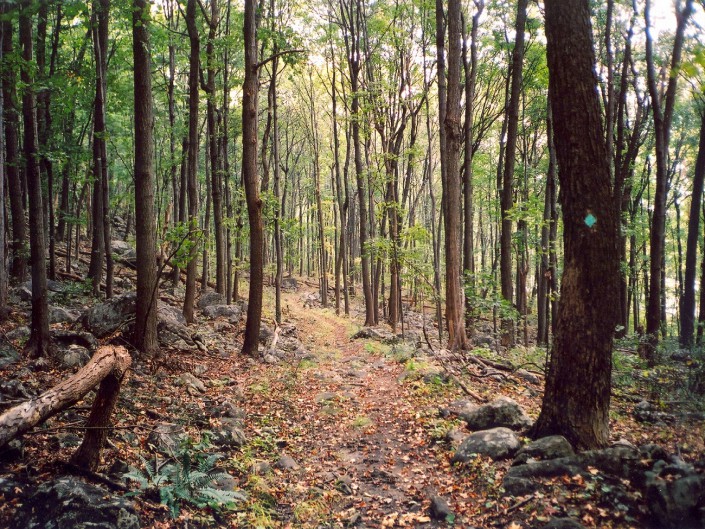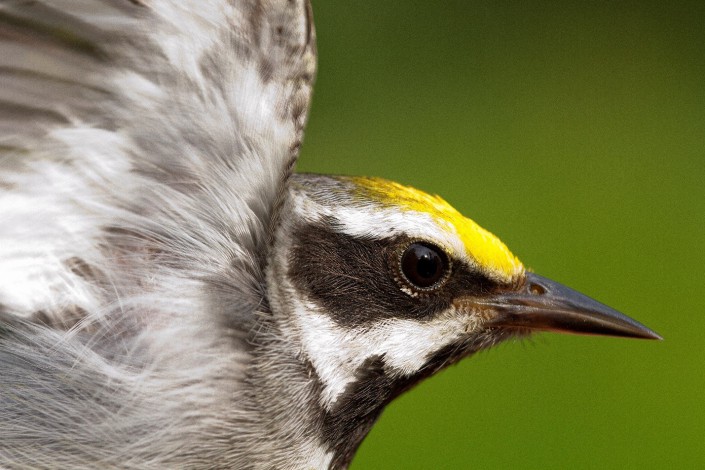Help Golden-winged Warblers Thrive in Sparta Mountain WMA
Comments on the Sparta Mountain WMA Forest Stewardship Plan are due Tuesday, March 1, 2016
by Emily Hofmann, Environmental Education Intern

Wildlife in the Sparta Mountain Wildlife Management Area (WMA) need your help! Submit your comments on the new Forest Stewardship Plan by Tuesday, March 1, 2016.
Conserve Wildlife Foundation supports the new Forest Stewardship Plan for the Sparta Mountain WMA located in Sparta Township, New Jersey. The original Forest Stewardship Plan was introduced in 2009. The New Jersey Division of Fish and Wildlife, in partnership with New Jersey Audubon, recently updated and expanded upon the plan. The new revisions show a commitment to creating healthier forest habitat for wildlife, while abiding by the strict guidelines provided by third-party certification, along with agency regulations.
The new ten-year Plan, drafted by New Jersey Division of Fish and Wildlife and New Jersey Audubon Society, and conducted under an existing Forest Stewardship Plan for the wildlife area, will allow conservation actions to continue. The plan addresses the following key goals:
- Improve the health, structure and diversity of the forests;
- Create young forest habitat for birds and other wildlife that are of conservation concern;
- Enhance foraging, nesting and roosting habitat for cavity dwelling birds and bats;
- Suppress the spread of invasive species;
- May provide basking habitat for turtles;
- Protect and maintain views and vistas;
- Improve passive recreational opportunities;
- Protect water resources;
- Monitor and evaluate stewardship activities
Kelly Triece, our Private Lands Biologist, has pointed out that 80% of New Jersey forests are currently between 60-99 years old, while only 5% of the forests are between 0-19 years old. CWF supports forest stewardship projects, like those presented in the new plan, that seek to even out this clear disparity and promote more diversity in age class of New Jersey forests. Increased diversity in forest age brings increased diversity in plant and animal species. This type of forest habitat has the potential to support over 125 bird species, including the Golden-winged Warbler.

The public comment period is an opportunity for you to support forest stewardship that will improve the health of the forest and create young forest habitat; essential for protecting the state endangered Golden-winged Warbler, as well as numerous other flora and fauna.
The Department of Environmental Protection needs to hear from you! To submit comments, visit DEP’s website. Provided below is a draft set of comments which you are welcome to use, as well as revise and submit. Remember, the deadline is Tuesday, March 1, 2016.
Learn More and Take Action:
- Read the new Forest Stewardship Plan
- Submit comments on DEP’s website
- New Jersey Audubon Society’s plan summary and other resources
Emily Hofmann is the Environmental Education Intern for Conserve Wildlife Foundation of New Jersey.
Suggested text:
To the New Jersey Department of Environmental Protection,
Please accept the following comments in support of adoption and implementation of the Sparta Mountain Wildlife Management Area Forest Stewardship plan. This new plan builds on an existing plan that has been under implementation for several years. The new plan seeks to addresses the long-term health of the forest and the critically important lack of young forest habitat by working to create new young forest habitat patches over the next ten years. In addition, the plan includes explicit goals to protect and enhance hydrologic resources, monitoring of priority wildlife populations, provide compatible wildlife recreational opportunities and adherence to strict third party certification principles and criteria. This plan is important because the resident and migratory birds, mammals, reptiles and amphibians that rely on young forest habitat are struggling to maintain themselves in places they were once commonly found. Throughout the Northeast, young forest habitat has diminished as forestland has been converted to development and abandoned farms and homesteads have matured to woodlands. As a consequence, a wide variety of wildlife have experienced the loss of the scrubby, patchy, disturbed portions of the forest that they rely on for food and cover.
The plan was developed based upon an understanding of the needs of wildlife in the Highlands Region and with a specific focus on ensuring that forest health is improved. The plan authors thoroughly reviewed the history of the region, considered the important water resources of Sparta Mountain, evaluated wildlife needs, recreational desires and community connections, and brought all of this together with a keen eye toward improving the health and vigor of the forest. The plan has gone through an extensive review by experts at the Department of Environmental Protection, has taken input from a wide-range of stakeholders and meets the requirements of a third party certification system. The plan is appropriate and needed given the mission of the NJ DEP and the NJ Division of Fish and Wildlife, the agency charged with management of the wildlife area and conserving wildlife. I encourage the Department of Environmental Protection to adopt and implement the Sparta Mountain Wildlife Management Area Forest Stewardship Plan.